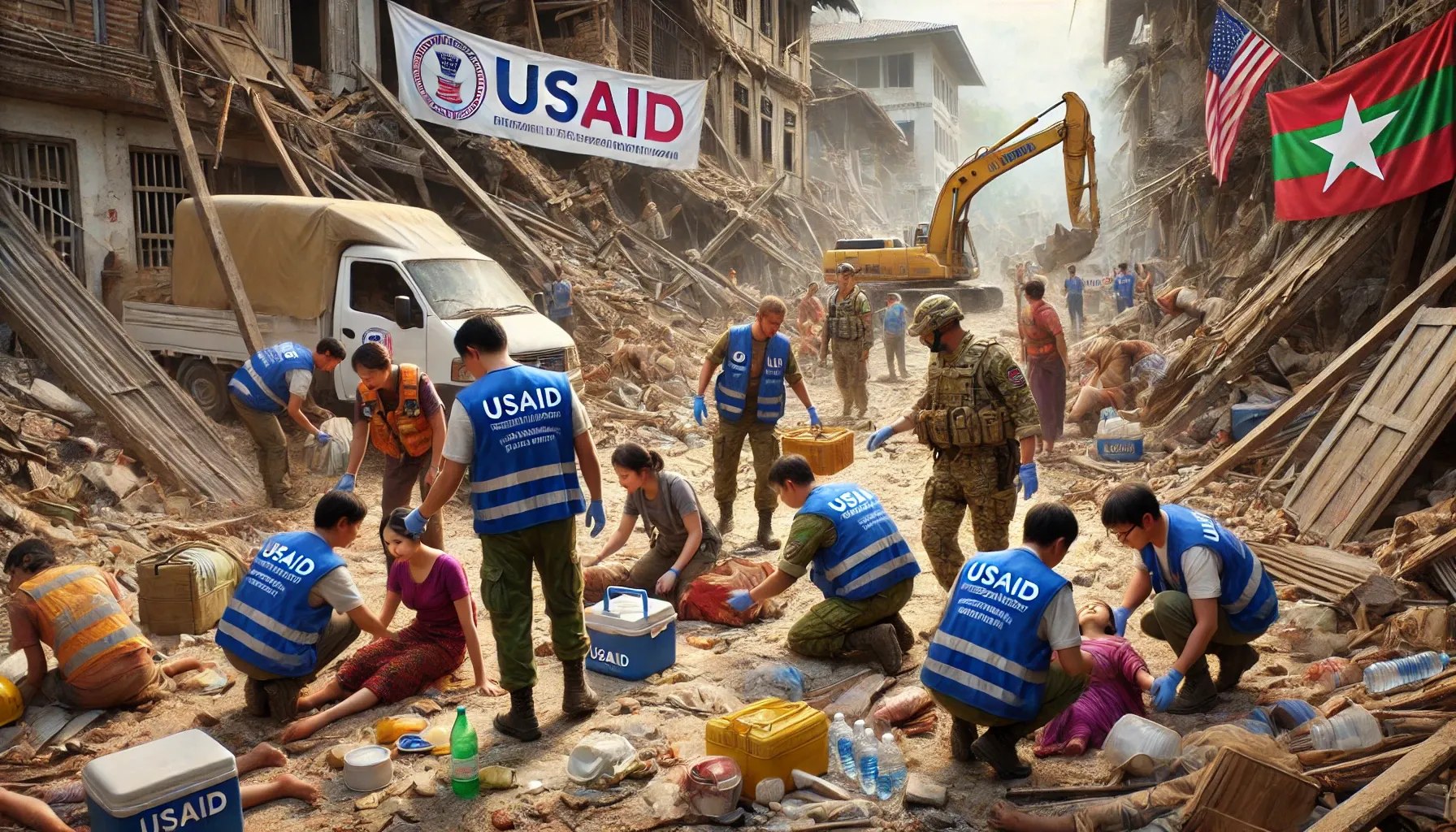UPSC
The Hindu Briefs
USAID Cuts and Myanmar’s Earthquake Crisis
Last Updated
2nd April, 2025
Date Published
2nd April, 2025
Share This Post With Someone

Context:
A 7.7-magnitude earthquake struck Myanmar on March 28, 2025, exacerbating an already dire humanitarian situation amid civil war and economic collapse. This summary, based on an article from The Hindu dated April 1, 2025, examines how recent U.S. funding cuts to the U.S. Agency for International Development (USAID) have impacted relief efforts, offering critical insights into international aid dynamics and their implications for disaster response in conflict zones.
Key Points:
- Earthquake Overview: On March 28, 2025, a 7.7-magnitude earthquake hit central Myanmar, followed by a 6.4-magnitude aftershock, causing widespread devastation. The death toll exceeded 2,719 by April 1, 2025, with expectations of it surpassing 3,000 as rescue efforts continued.
- Pre-Existing Crisis: Myanmar was already grappling with a humanitarian crisis before the quake, with 19.9 million people needing aid, 3.5 million displaced, and over 15 million facing food insecurity, worsened by a 2021 military coup and ongoing civil war.
- USAID Funding Cuts: The Trump administration announced the complete elimination of USAID funding and jobs on March 28, 2025—the same day as the earthquake—shutting down the agency that had provided humanitarian aid globally for nearly 60 years.
- Historical USAID Role: In 2024, USAID contributed $240 million to Myanmar, accounting for one-third of all multilateral humanitarian assistance, supporting healthcare, governance, and human rights programs.
- Impact on Relief Efforts: The cuts stripped Myanmar of significant aid, reducing USAID programs from numerous initiatives to just three, severely limiting the U.S. capacity to respond swiftly to the earthquake crisis.
- Healthcare Fallout: At least seven U.S.-funded hospitals along the Myanmar-Thailand border shut down due to the cuts, crippling medical support for quake victims and ongoing conflict casualties.
- Media Disruption: USAID-funded exiled Myanmar media outlets lost support, weakening local reporting on the disaster and military actions, further isolating affected communities.
- Delayed U.S. Response: The U.S. pledged $2 million and sent a three-member USAID assessment team, but their arrival was delayed until nearly a week after the quake due to visa issues with Myanmar’s junta and internal logistical challenges from the cuts.
- Contrast with Past: Unlike the rapid USAID Disaster Assistance Response Team (DART) deployment after the 2023 Morocco earthquake, the Myanmar response was slow, hampered by the loss of experienced staff and infrastructure.
- State Department Defense: Spokesperson Tammy Bruce denied that USAID cuts directly limited the response, attributing delays to logistical reorganization rather than funding shortages, though experts disagreed.
- International Response: China filled the aid gap, sending rescue teams and $14 million in supplies (tents, blankets, first aid kits), while India deployed INS Gharial with 440 tonnes of relief material and set up a field hospital in Mandalay.
- Local Efforts: The Myanmar Red Cross mobilized volunteers for search and rescue, first aid, and mobile health units, but faced challenges from damaged infrastructure and junta restrictions.
- Junta’s Role: The military junta declared a week of mourning and sought international help but was accused of blocking aid to rebel-held areas like Sagaing and conducting airstrikes post-quake, complicating relief efforts.
- Rebel Ceasefire: The Three Brotherhood Alliance (Myanmar National Democratic Alliance Army, Ta’ang National Liberation Army, Arakan Army) declared a month-long unilateral ceasefire to aid rescue efforts, engaging only in self-defense.
- UN Appeal: UN officials urged global aid escalation before the monsoon season worsened conditions, with the death toll rising and over 10,000 buildings damaged or collapsed.
- Legal Context: A U.S. appeals court allowed the Department of Government Efficiency (DOGE), led by Elon Musk, to continue USAID cuts during an appeal, upholding the funding rollback despite legal challenges.
Key Terms:
- USAID: U.S. Agency for International Development, a key provider of humanitarian aid, now defunded in Myanmar.
- 7.7-Magnitude Earthquake: A major seismic event on March 28, 2025, devastating central Myanmar.
- Military Junta: Myanmar’s ruling military government post-2021 coup, accused of obstructing aid.
- Three Brotherhood Alliance: Rebel coalition declaring a ceasefire to support earthquake relief.
- DART: Disaster Assistance Response Team, USAID’s rapid-response unit, delayed in Myanmar.
- Department of Government Efficiency (DOGE): U.S. entity led by Elon Musk, overseeing USAID cuts.
- Myanmar Red Cross: Local organization leading grassroots relief efforts post-earthquake.
- Humanitarian Crisis: Pre-existing condition in Myanmar, with millions needing aid before the quake.
Link To The Original Article – https://www.thehindu.com/news/international/how-has-usaid-cuts-affected-myanmar-earthquake-relief-efforts/article69400351.ece

UPSC
Indian Express Concise
